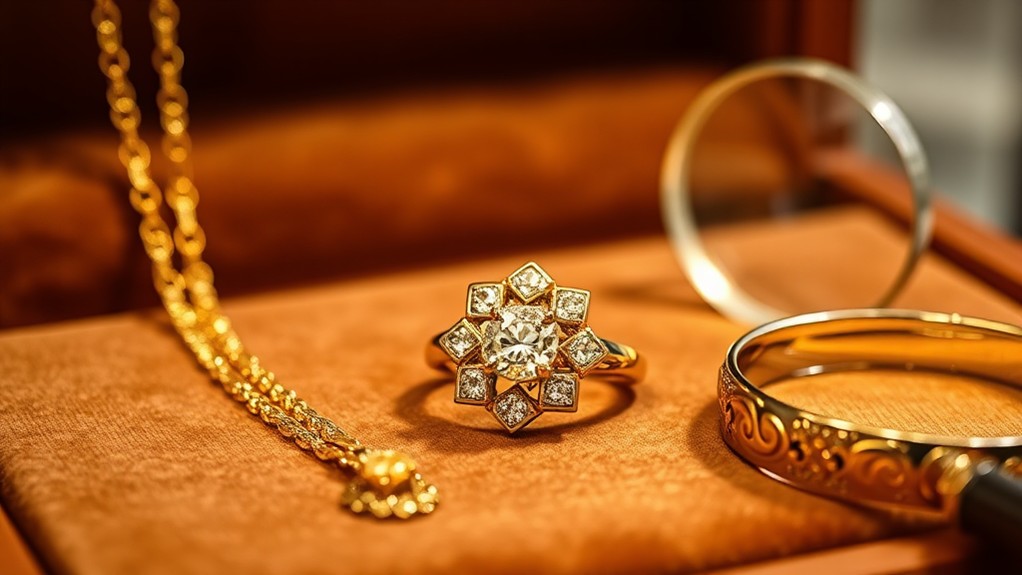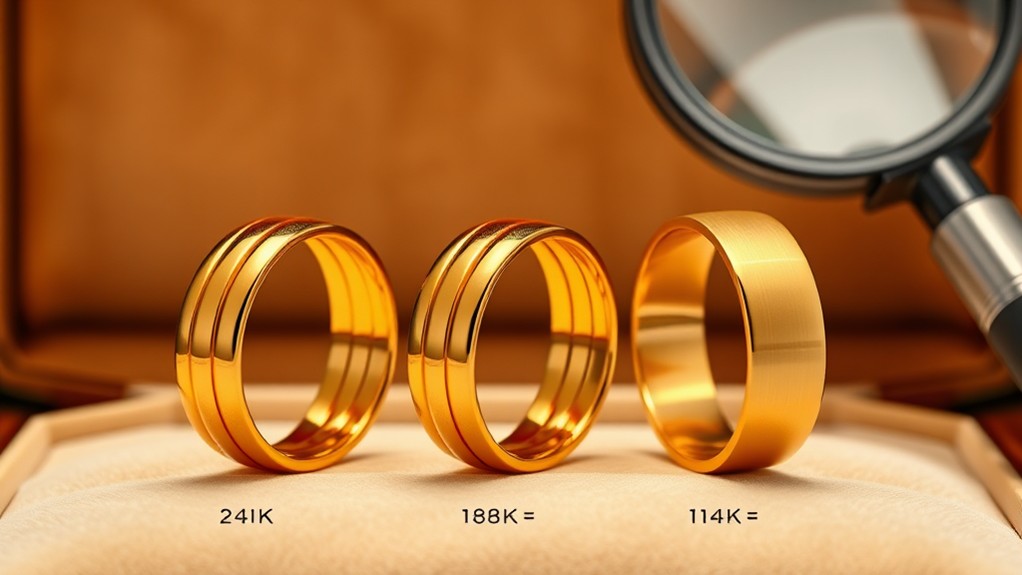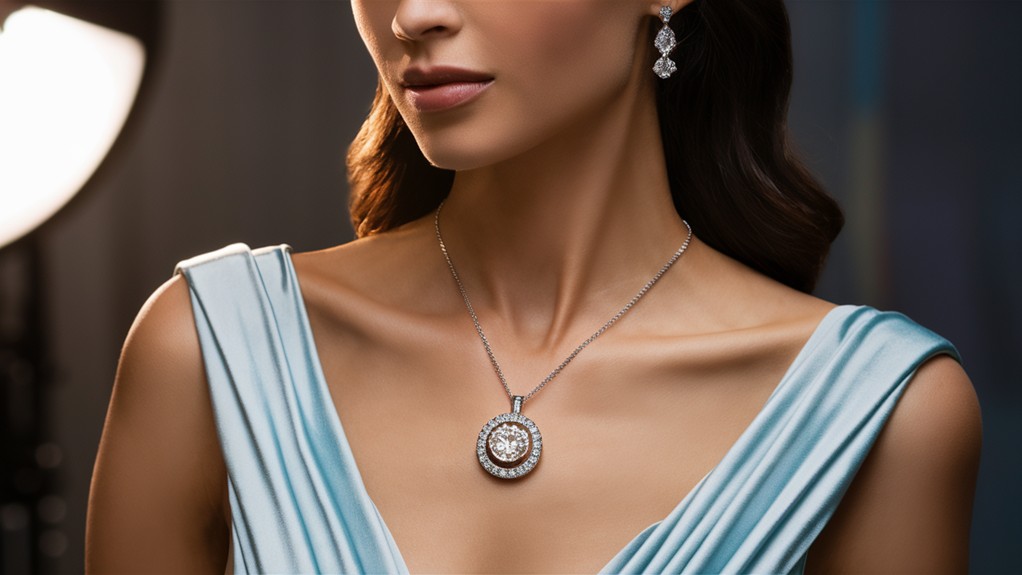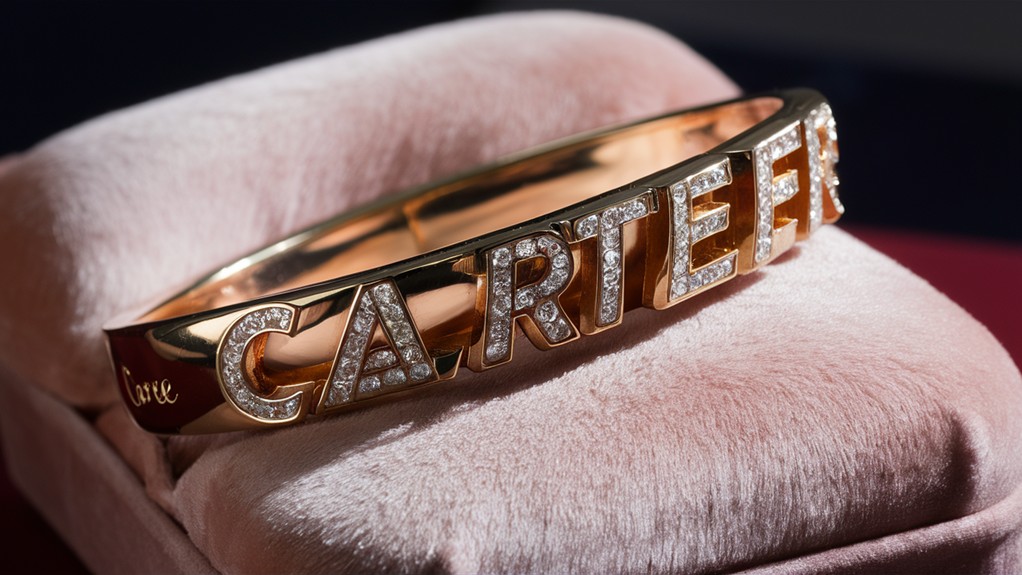When you're in the market for gold jewelry, you'll quickly encounter terms like 24K, 18K, and 14K. But what do these designations really mean, and how do they affect your purchase? Understanding gold karats is essential to making an informed decision about the quality, durability, and value of your precious metal pieces. Whether you're looking for a statement piece or an everyday accessory, knowing the differences between these gold purities can help you choose the perfect item. Let's investigate the world of gold karats and uncover the secrets behind these glittering numbers.
Our Highlighted Points
- Gold karats measure purity, with 24K being 100% pure, 18K containing 75% gold, and 14K containing 58.3% gold.
- Higher karat gold is softer and more lustrous, while lower karats offer improved durability and affordability.
- 24K gold is ideal for investment, 18K balances luxury and practicality, and 14K is best for everyday wear.
- Karat selection depends on intended use, budget, and lifestyle, with active individuals benefiting from lower karats.
- Proper care and maintenance, including regular cleaning and avoiding harsh chemicals, help preserve gold jewelry's quality and appearance.
Defining Gold Karats

In the world of jewelry, gold karats are an important measure of purity and quality. When you're shopping for gold jewelry, understanding karats is vital to making an informed decision. Gold karats, denoted by the letter "K," indicate the proportion of pure gold in an alloy. The karat scale ranges from 1K to 24K, with 24K representing 100% pure gold.
Here's a breakdown of common gold karat levels:
- 24K: 100% pure gold, the softest and most vibrant
- 22K: 91.7% gold content, rich color but less durable
- 18K: 75% gold, balancing beauty and durability
- 14K: 58.3% gold, most durable for everyday wear
As you move down the karat scale, the gold content decreases, and other metals are added to create gold alloys. These alloys improve durability and reduce costs.
While higher karat gold offers greater purity and a richer color, it's likewise more susceptible to scratches and dents. Lower karat gold, such as 14K, provides increased durability, making it ideal for everyday jewelry.
When selecting gold jewelry, consider the balance between purity and practicality based on your intended use and personal preferences. If you plan to wear your gold jewelry regularly, a lower purity gold, such as 14 karat, may be a better choice as it is more durable and less prone to scratching or bending. However, if you are looking for a piece of jewelry that is more of a long-term investment and will not be worn frequently, a higher purity gold, such as 18 karat or 24 karat, may be more suitable. When it comes to investment tips for gold buying, it is important to consider factors such as market trends, the reputation of the seller, and the potential for future resale value.
24K Gold: Ultimate Purity
The pinnacle of gold purity, 24K gold represents the ultimate in precious metal refinement. Comprising 100% pure gold, this karat level offers unparalleled softness and malleability. However, its susceptibility to scratches and dents makes it unsuitable for everyday wear, limiting its use in jewelry applications.
When considering gold jewelry, you'll encounter different karat options, each with distinct characteristics:
- 24K gold: The highest purity, but too soft for daily use
- 18K gold: A balance of 75% gold and 25% alloy, suitable for fine jewelry
- 14K gold: Contains 58.3% gold, ideal for engagement rings and everyday pieces
- Higher purity gold: More valuable per gram, but potentially more reactive to sensitive skin
18K gold strikes a balance between purity and durability, making it an excellent choice for fine jewelry that can withstand regular wear.
For engagement rings and everyday pieces, 14K gold offers superior strength and scratch resistance.
When selecting karat gold jewelry, consider your lifestyle, budget, and skin sensitivity. Higher purity gold may be more valuable, but lower karats often provide better durability and reduced risk of skin reactions for sensitive individuals.
18K Gold: Luxury and Practicality

Striking a balance between luxury and practicality, 18K gold offers the best of both worlds for perceptive jewelry enthusiasts. With 75% pure gold content, 18K gold maintains a rich color while providing sufficient durability for everyday wear. This makes it an excellent choice for those seeking a touch of luxury without compromising on strength.
When choosing between different gold karats, consider your lifestyle and jewelry needs:
| Karat | Gold Purity | Characteristics |
|---|---|---|
| 24K | 100% | Luxurious appearance, soft, easily scratched |
| 18K | 75% | Balance of beauty and durability, suitable for daily use |
| 14K | 58.3% | Most popular, excellent hardness, ideal for engagement rings |
| 22K | 91.7% | More luxurious than 18K, less durable |
| 10K | 41.7% | Least expensive, most durable |
For active individuals, 14K gold is the best option because of its superior durability and scratch resistance. It's particularly well-suited for engagement rings and other frequently worn pieces. However, if you're looking for a more luxurious option and don't mind sacrificing some strength, 18K gold provides a beautiful compromise between purity and practicality.
14K Gold: Durability Meets Value
Durability and value converge in 14K gold, making it a top choice for everyday jewelry. With 58.3% gold content and 41.7% alloy metals, 14K gold offers superior resistance to wear and tear compared to its higher-karat counterparts. This composition strikes an optimal balance between luxury and practicality, ensuring your jewelry withstands daily use while maintaining its aesthetic appeal.
When choosing between 14K, 18K, and 24K gold, consider these factors:
- Durability: 14K gold is the most durable, ideal for engagement rings and other frequently worn pieces.
- Appearance: 18K gold provides a deeper yellow hue, while 14K offers a warmer tone.
- Gold content: 24K is pure gold but too soft for daily wear; 18K contains 75% gold, and 14K has 58.3%.
- Cost: 14K gold is more budget-friendly than 18K, offering excellent value for money.
While 18K gold boasts a higher gold content and luxurious appearance, it's more prone to scratching than 14K.
For those seeking a balance between durability and value, 14K gold emerges as the optimal choice. Its resilience to daily wear, coupled with its attractive price point, makes it an excellent investment for long-lasting jewelry pieces.
Choosing the Right Karat

Selecting the ideal gold karat for your jewelry involves balancing multiple factors. When choosing the right karat, consider purity levels, durability, and intended use. 24K gold, while pure, is too soft for everyday wear. Instead, opt for 18K or 14K gold, which are alloyed with other metals for increased strength.
| Karat | Purity | Best Use |
|---|---|---|
| 24K | 100% | Investment |
| 18K | 75% | Fine jewelry |
| 14K | 58.3% | Everyday wear |
| 10K | 41.7% | Budget options |
| 9K | 37.5% | Costume jewelry |
For engagement rings and daily wear, 14K gold offers an ideal balance of durability and affordability. It's composed of 58.3% gold and 41.7% alloyed metals, making it resistant to scratches and wear. If you prefer a richer color and higher purity, 18K gold is suitable for fine jewelry, though it may require more maintenance.
Consider your lifestyle when selecting a karat:
- Active lifestyle: Choose 14K for its durability
- Occasional wear: 18K provides luxury and brilliance
- Investment: 24K offers maximum purity
Always check for purity stamps on gold jewelry to verify quality. Remember, items below 14K may blur the line between fine and costume jewelry, potentially affecting value and longevity.
Care and Maintenance Tips
Proper care and maintenance of your gold jewelry can greatly extend its lifespan and preserve its beauty. Regular cleaning with a soft cloth is vital to remove accumulated dirt and oils, maintaining the gold's shine.
To protect your precious pieces, store them separately in soft pouches or lined jewelry boxes, preventing scratching from contact with other items. Avoid exposing your gold jewelry to harsh chemicals, such as bleach or chlorine, as these can cause damage and tarnishing.
For high purity gold pieces, such as 18K and 22K, periodic maintenance is key because of their softness and susceptibility to scratching. Consider professional polishing to maintain their luster and appearance.
White gold jewelry, often rhodium plated, may require replating every few years to preserve its shine and protective coating.
To guarantee proper care of your gold jewelry:
- Clean regularly with a soft cloth
- Store pieces separately to prevent scratching
- Avoid exposure to harsh chemicals
- Schedule professional maintenance for high-karat gold
Frequently Asked Questions
Which Is Better 14K 18K or 24K Gold?
There's no definitive "best" gold karat. Your choice depends on your priorities. If you want durability, go for 14K. For a balance of luxury and strength, choose 18K. If purity's your goal, 24K is ideal.
Which Gold Is Pure 18K or 24K?
24K gold is pure gold, while 18K isn't. You'll find 24K gold contains 100% gold content, but it's softer. 18K gold is 75% pure, mixed with other metals for durability. Consider your needs when choosing between them.
What Is the Highest Purity of Gold?
The highest purity of gold is 24 karat (24K). It's 100% pure gold with no alloy metals. You'll find it's soft and malleable, making it perfect for investment pieces but less practical for everyday jewelry.
Is 24K Gold 100% Gold?
Yes, 24K gold is 100% pure gold. You'll find it's the highest karat available, containing no other metals. It's incredibly soft and malleable, making it less practical for everyday jewelry but perfect for special pieces.


